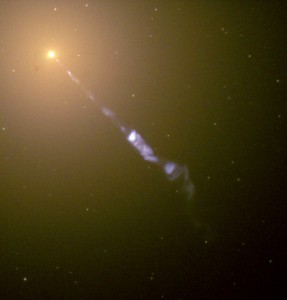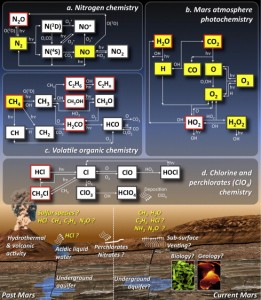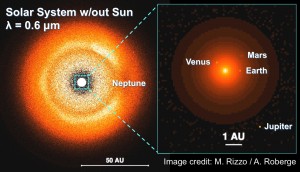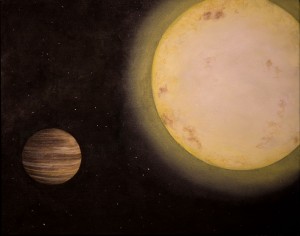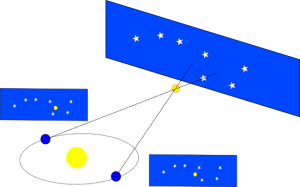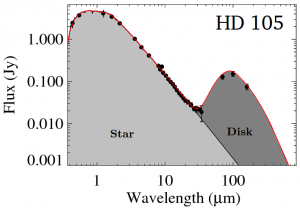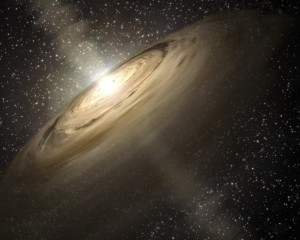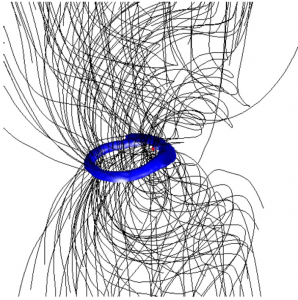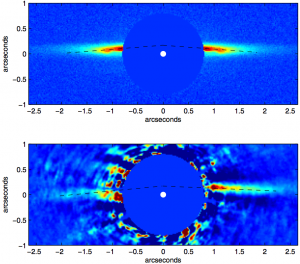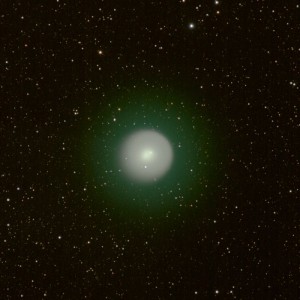
Coma around Comet 17P/Holmes, 2007/11/02. From http://en.wikipedia.org/wiki/Coma_%28cometary%29#mediaviewer/File:17P-Holmes_Auvergne_2007_11_02.jpg.
Interesting talk today from Dr. Gorden Videen of the Army Research Lab. Dr Videen is an expert in the interaction of aerosols with light, particularly in their scattering and polarization properties.
Scattering of light by aerosols is something most people are familiar: if you’ve ever walked around your house shortly after sunrise, you have probably noticed dust motes drifting through your house. The motes seem to disappear later in the day. What’s happened is that, as the sun climbs into the sky, the angle at which sunlight strikes the Earth’s surface increases, and the light scattering properties of dust render it less visible. Dr. Videen uses the basic principles to glean knowledge about a variety of aerosol particles, from spores to volcanic eruptions.
Dr. Videen talked at length about his studies of cometary dust. For example, observations of comets like Comet Holmes have suggested that the sizes of particles released from the comet as its gas jets erupt can evolve over time, reflecting the interactions between the jets and particles. Thus, we can use the same physics that shows you how dusty your house is to study gaseous explosions on comets.
